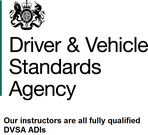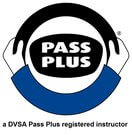UK Driving Theory Test Preparation

Before taking your practical driving test in the UK, you must first pass your driving theory test. Far from a formality, the UK driving theory test is an important assessment of your knowledge and understanding of the most important rules of the road.
In this guide, we’ll be taking a look at what you can expect when taking your driving theory test, along with how to plan and prepare ahead of the big day.
Eligibility Requirements
The only legal requirement for taking your driving theory test in the UK is holding a valid and active provisional driving licence at the time. This means that you can technically take your driving theory test on your 17th birthday, if you organise delivery of your provisional licence in advance.
However, it’s important to remember that if you successfully pass your driving theory test, your certificate will then be valid for two years only. If you don’t pass your practical driving test during this time, you will need to sit your driving theory test again.
All you need to know about the UK Driving Theory Test
How Does the Test Work?

The UK driving theory test takes place as a multiple choice quiz (50 questions) and a separate hazard perception test, which must be taken at an approved Driver and Vehicle Standards Agency (DVSA) theory test centre. There are currently more than 80 DVSA theory test centres across the UK, situated in most major towns and cities. All theory tests are developed and managed by the DVSA and the theory test centres are managed and run by Pearson Professional. Use the Government’s official UK theory test centre finder to locate your nearest test centre and book your driving theory test.
When you have found your nearest theory test centre, you will have the option of booking your test online or by telephone on 0300 200 1122. At which point, you will need to provide:
• Your full name and address
• A contact telephone number
• Your e-mail address if booking online
• Your provisional driving licence number
On the day, you’ll take your position at a computer at the allocated time to complete the multiple choice quiz. As the test is in its entirety now computer-based, you’ll find out if you’ve passed immediately after completing the test.
The multiple choice element of the test has a time limit of 57 minutes, during which you will be expected to answer all of the questions you’re presented with.
Study Materials
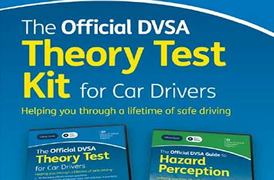
The main study materials required to prepare for your Theory Test are a DVSA approved Theory question CD Rom and Hazard Perception CD Rom or App.
The latest CD Rom editions can be bought from 'tso shop': Click here to view product.
The Highway Code
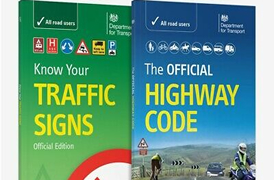
In the days and weeks running up to your test, the DVSA recommends that you carefully study The Highway Code. There are various official training materials and resources available from the DVSA you may find helpful, which can be accessed online or purchased from bookstores.
A detailed knowledge and understanding of The Highway Code is essential, as many of its rules are mandatory legal requirements. It is a criminal offence to break any of the laws detailed in The Highway Code when they also contravene a provision of Road Traffic Act. This in turn could mean you end up with points on your licence, a fine or even possibly a driving ban depending upon the seriousness of the Offence.
Everything you need to know about The Highway Code can be found at the Government’s official resource - click here for more information. You can also access information relating to 'Know Your Traffic Signs'.
Elements of the Test
The driving theory test is separated into two parts:
1. Multiple choice quiz
2. Hazard perception test
Multiple Choice Quiz
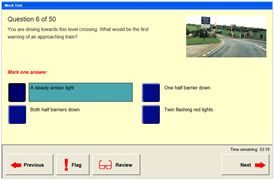
During the multiple choice part of the test, you will be quizzed on various aspects of The Highway Code and the more general rules of the road. You’ll also be expected to know your traffic signs, along with how to identify the three basic types of traffic signs:
• Signs that give information
• Signs that provide warnings
• Signs that give orders
You will be presented with a wide variety of road signs, markings and symbols which you will be expected to identify and understand the purpose of.
Hazard Perception Test
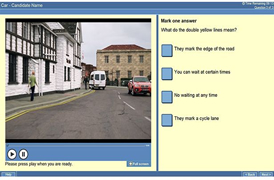
A relatively recent introduction, the hazard perception test presents learners with a series of clips depicting everyday scenarios on the roads. Each of the clips features at least one hazard, though it may also feature additional hazards.
The task is to use the clues and indicators available to identify these potential hazards, before they are able to cause an accident or injury. Examples of which could be children playing at the side of the street, an emergency vehicle with its lights flashing or a parked vehicle that may pull out in front of you.
You will be expected to identify and respond to the hazard at the right time - not too early and not too late - to ensure that you would take the appropriate action in a timely manner when driving on public roads.
How the Test is Scored
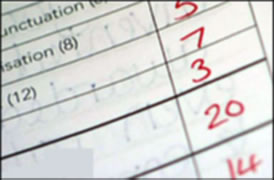
In order to successfully pass the multiple choice part of the test, you will need to answer at least 43 out of the 50 questions correctly - a score of 86% or more. With the hazard perception test, you will be expected to score at least 44 out of 75. Both sections must be passed in order to pass your driving theory test.
Once considered disproportionately easy, the UK driving theory test has become significantly more challenging over recent years. In fact, the approximate current pass rate stands at just over 47%, highlighting the importance of doing your homework and preparing adequately for the big day!
What Happens After Your Test?
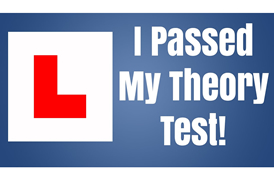
If you successfully pass your driving theory test, you will be issued with a certificate that is valid for two years. During which, you will have the opportunity to take your practical driving test and (hopefully) get your hands on a full UK driving licence. If you fail your driving theory test, you’ll need to start the process again from scratch. There are no specific limitations on how many retests you can take, though you’ll need to leave a gap of at least three working days between your failed test and your test.
How Best to Prepare For Your Driving Theory Test

Without doubt, the three most effective ways of preparing for your driving theory test are as follows:
1. Research and study driving theory, focusing heavily on The
Highway Code
2. Get practical driving experience with an instructor
3. Take as many official DVSA mock tests as you can
These days, pretty much everything you need to know about driving theory (Including the Highway Code) is available online. There are plenty of books and offline resources that can also help, but you’ll find most of the information and advice you need on the web. Getting practical driving experience with an instructor can also prove invaluable, as it’s not until you get out and about on public roads that you get a feel for what road safety is all about. It’s therefore worth speaking to a reputable driving school to discuss the options available.
As for official DVSA mock tests, it’s worth taking as many as you possibly can ahead of time. The most up-to-date tests from the DVSA can be accessed via the following link: Safe Driving For Life - free video test clip
There are plenty of unofficial mock tests that can also help, so be sure to check those out too.
Contact Manchester Driver Training:
If you have any questions or concerns about the current UK driving theory test, we would be happy to hear from you. Likewise, if you need any help preparing for your test or would like to benefit from practical driving experience in the run-up to your test, we can help. Contact the team at Manchester Driver Training – we will be pleased to take your call.
NOTE: This article contains public sector information licensed under the Open Government Licence v3.0.
© 2026 Manchester Driver Training. All rights reserved.

